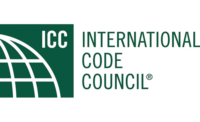Rigor Is Required to Mitigate Risk as Supply and Labor Shortages Continue to Plague Construction

It is common knowledge that Oregon, and the rest of the nation, have been experiencing extreme market difficulties with supply chains and labor shortages as a direct aftermath of COVID-19. Material availability, cost escalations, supply chain disruptions, access to labor and inflation have impacted many areas, including construction.
There are several ways owners and contractors can protect themselves from market risk; adequate and frequent communication rises to the top of this list. Early discussions – that is, pre-contract – between project owners, generals, subcontractors and suppliers are now par for the course to identify potential issues in obtaining materials and adequately staffing the job. These communications will not only aid the contracting parties in identifying potential delays to mitigate project delays, but will also strengthen these critical relationships early in the process.
All contracting parties should also communicate with their key partners, such as their brokers, sureties, CPAs and attorneys, to fully understand if they can afford to undertake the project. These partners can help assess whether additional insurance coverages are available to mitigate the risk. These can range from your company being entitled to additional tax credits (namely, the Employee Retention Tax Credit) to whether there are other provisions you should consider in negotiating the construction contract.
Contractor failure is extremely costly and often costs three times the project estimate. Consequently, generals should consider conducting subcontractor pre-qualifications to help reduce risk. It is also essential to verify all sub-bid numbers (particularly where clarifications, exemptions and time limits have been incorporated into the bid) before relying on and incorporating those numbers into the upstream contract with the owner.
This sounds like it should be standard practice; however, I have been amazed at the number of generals that have not verified sub-bid numbers. Consequently, they become “surprised” when a subcontractor refuses to enter into a subcontract for the bid amount due to escalations occurring between the date of bid and the date of contracting. Most contractors (sometimes with the owner’s consent) include a window to adjust their bids should certain materials increase by a set percentage before the parties sign on the dotted line.
 Image credit: ridvan_celik / iStock / Getty Images Plus via Getty Images.
Image credit: ridvan_celik / iStock / Getty Images Plus via Getty Images.
“Force Majeure” Changes
What was considered boilerplate to any standard construction contract has also experienced a significant review following the impacts of COVID-19. We see an ever-increasing expansion of the definition of “force majeure” in delay and related provisions, including specific references to epidemics and pandemics. Additionally, such provisions now typically include protection against acts of or work stoppages mandated by government authorities and against the failure of material suppliers. We also see increased attempts to define compensable delays within or adjacent to the standard delay provisions. Owners and generals beware: Ensure that any delay provision intends to hold you responsible only for those delays which you have some control over.
Another trend is the introduction of material escalation provisions. Some owners—primarily those with pre-existing relationships with generals—are willing to consider these clauses so long as the risk is not shifted entirely to the owner. Under a standard lump sum contract, the general typically bears all risk for post-execution cost escalations. These clauses are intended to “share” the pain where the market has been so volatile.
Typically, these provisions require the contractor to demonstrate a minimum threshold of increase (with backup documentation) and limit the owner’s responsibility to a set contingency amount and/or require that such escalations first be paid out of any contractor contingency fund in its estimate. Something to consider is whether these types of escalation clauses should apply to all materials or only a subset of materials, and whether the owner should get the benefit of any cost savings in the event material costs actually decline. Another way to address this particular issue is a cost-plus contract.
We also see a handful of construction contracts with public health and/or COVID-specific provisions that attempt to outline a process for addressing impacts relating to known and unknown effects of COVID-19 and resulting government restrictions. Again, most of these provisions focus on setting forth a process for the parties to work together to avoid claim posturing.
Pre-COVID Law Changes
Right before COVID hit, Oregon law also underwent two other significant changes that are often forgotten:
1) The Corporate Activities Tax under ORS 317A.125.
2) The New Retainage Escrow Requirements for projects over $500k under ORS 701.420(2)(b).
Due to the prompt rollout of CAT, most contractors have figured out how to address corporate activity taxes; however, a handful remain that have forgotten it. The key is to review who is responsible for paying this type of tax, particularly as other jurisdictions (such as Metro) are implementing similar taxes. Many of these will fall on the contractor unless the specific language in the construction contract identifies which tax each party bears the burden of paying.
Similarly, many contracting parties have all but forgotten the new escrow requirements concerning retainage. ORS 701.420(2)(b) requires:
“If the contract price exceeds $500,000, the owner, contractor or subcontractor shall place amounts withheld as retainage into an interest-bearing escrow account. Interest on the retainage amount accrues from the date the payment request is approved until the date the retainage is paid to the contractor or subcontractor to which it is due.”
Many project lenders have balked at establishing a separate escrow account (with fiduciary implications) for the holding of retainage. Many project owners have reconsidered whether it is worth the hassle to retain the five percent cap. There is also some ambiguity about whether generals can establish one account for retainage withheld from all subs or whether the new statute requires separate accounts. As a result, we see an uptick in either the elimination of retainage in construction contracts or the attempt to waive the requirements of ORS 701.420(2)(b) – which has not yet been tested.
These are a few of the issues we are confronting daily in this semi-post-COVID world. The lesson: don’t rely merely on past practices. Take the time to talk with the entire project team, including your professional partners, to ensure that you have at least considered additional ways to mitigate the risk to you and the project.
Looking for a reprint of this article?
From high-res PDFs to custom plaques, order your copy today!








